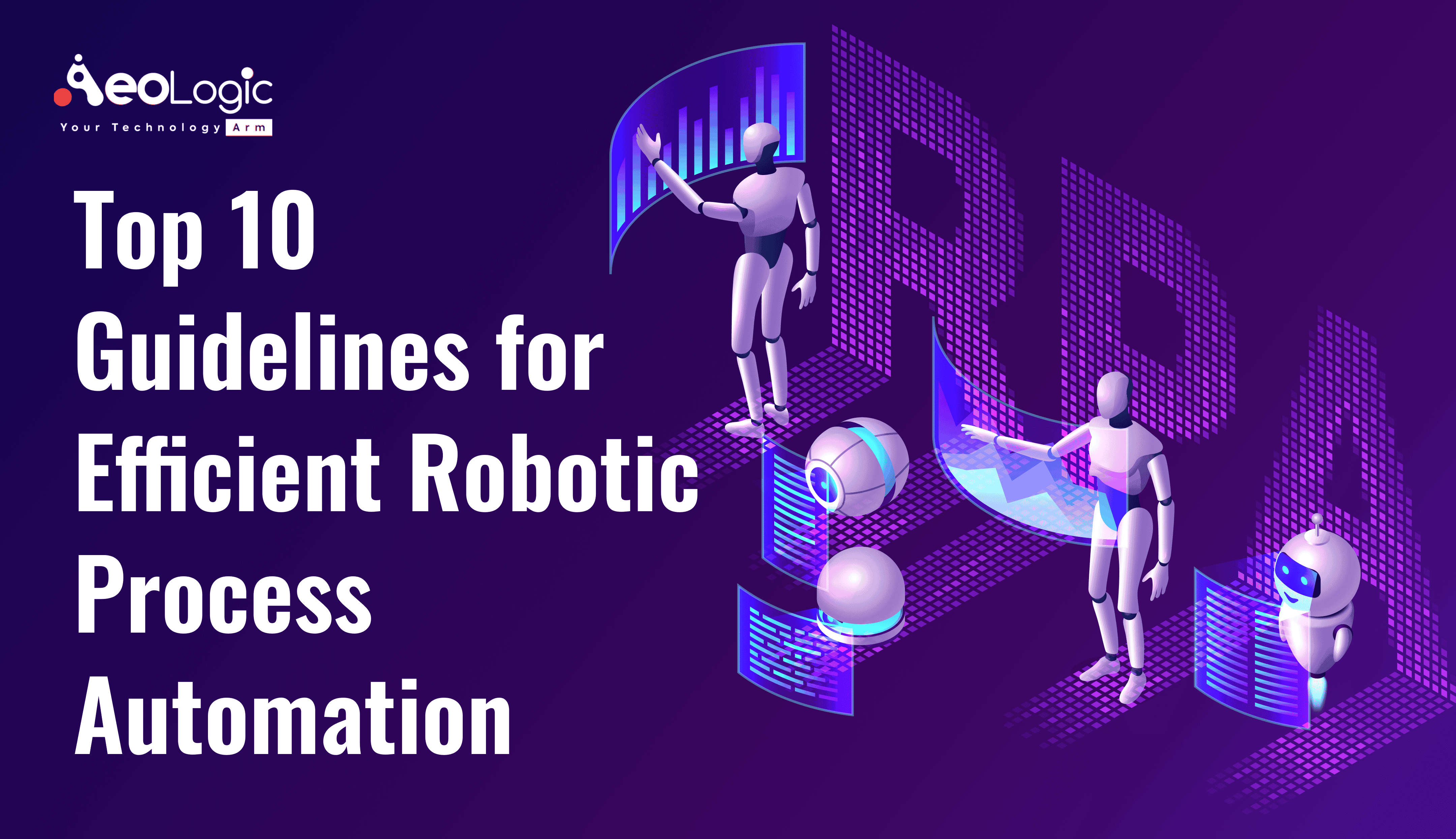In a world where technology accelerates at an astonishing pace, Robotic Process Automation (RPA) remains the silent hero, driving efficiency like never before. Picture a virtual workforce that tirelessly executes tasks, improving speed, reducing errors, and saving costs. That’s the power of RPA!
These top 10 guidelines will help you unlock the full potential of this transformative technology. Master the art of efficient RPA deployment, supercharging your organization’s productivity, and leaving your competition in the dust.
Buckle up and prepare to explore the fascinating world of automation. Discover How Robotic Process Automation Helps Boost Carrier Efficiency, evolving from a mere concept to a practical, efficiency-boosting tool in your hands. Let’s dive right in!
10 Guidelines for Robotic Process Automation (RPA)
To harness the true power of this groundbreaking technology, let’s dive deep into the top 10 guidelines that can help streamline your RPA efforts and transform the way your organization operates.
1. Understand Your Business Processes
Before you can reap the benefits of RPA, it’s crucial that you understand your business processes inside out.
- Are your processes standardized?
- Can they be improved upon?
Unleashing RPA on a poorly understood process is like asking a blindfolded person to paint a picture; the outcome is unpredictable at best. So, invest your time in understanding the process before integrating RPA.
Also Read: How Robotic Process Automation Can Contribute To Retail Growth
2. Start Small, Think Big
Instead of going for a grand makeover, start small. Pick a single, simple process where the benefits of RPA can be clearly seen. Once the benefits become evident, you can gradually upscale and integrate RPA into other processes. Remember, every big journey starts with small steps!
3. Prioritize Your Processes
Not all processes are created equal. Some might benefit more from RPA than others. Prioritize processes based on factors such as potential time savings, error reduction, and cost-effectiveness. This way, you’ll ensure maximum return on your investment.
4. Training Your Workforce
It’s one thing to have an RPA system; it’s another to have a workforce that can use it effectively. Make sure your employees are trained to leverage the technology. (https://richmondartcenter.org/) This ensures a seamless transition and helps your team adopt the technology more willingly.
5. Foster Collaboration between IT and Business
RPA is a tool that brings together business and IT. To ensure its successful implementation, promote collaboration between these two teams. The IT department can help with the technical aspects, while the business team can provide insights into the processes that need automation.
6. Set Clear Goals
What do you hope to achieve with RPA?
- Is it cost reduction?
- Error elimination?
- Faster execution of tasks?
Define your goals clearly before launching your RPA initiative. This will serve as a guiding light throughout the implementation process.
7. Regular Monitoring and Maintenance
Just like a car needs regular servicing to perform at its best, RPA systems also require consistent monitoring and maintenance. This ensures that they continue to operate efficiently and effectively.
8. Document Everything
Documentation is a crucial part of any RPA initiative. From process details to error logs, keep everything documented. This will help you analyze the performance of your RPA system and make improvements as needed.
Also Read: Robotic Process Automation (RPA) in the Banking Industry
9. Embrace Change
Change is the only constant in technology. As your business evolves, your RPA system should too. Always be open to revising and improving your automation processes.
10. Consult an Expert
Sometimes, the best way forward is to seek expert advice. Don’t hesitate to consult an RPA expert who can provide valuable insights and guide you in making the right decisions.
With these guidelines in your pocket, I’m confident that you’ll effectively employ Robotic Process Automation to boost carrier efficiency in your organization. Remember, RPA is a journey, not a destination. Embrace the journey, and you’ll be amazed by the transformation it brings to your business.
Also Read: How Small Companies Can Benefit from Robotic Process Automation
Final Words
In the digital age, RPA is a stepping stone toward a more efficient, cost-effective business operation. Armed with these top 10 guidelines, you’re now ready to take on the world of automation, maximizing productivity while minimizing costs and errors. Remember, the key is to start small, understand your business processes thoroughly, set clear goals, and continually monitor and improve. Above all, don’t shy away from seeking expert help when you need it.
If you want to learn more about how to successfully adopt RPA in your company, connect with Aeologic Technologies.
Frequently Asked Questions
What processes are best suited for RPA?
While almost any rule-based process can be automated, RPA typically excels in areas where tasks are repetitive, prone to human error, or require significant manual labor. Examples include data entry, form filling, invoice processing, and customer service tasks.
Is RPA a threat to human jobs?
RPA isn’t a threat but a boon to the workforce. It takes over mundane and repetitive tasks, freeing up human employees to focus on more complex, creative, and strategic tasks. RPA doesn’t replace humans; instead, it empowers them to contribute in more meaningful and valuable ways to the organization.









